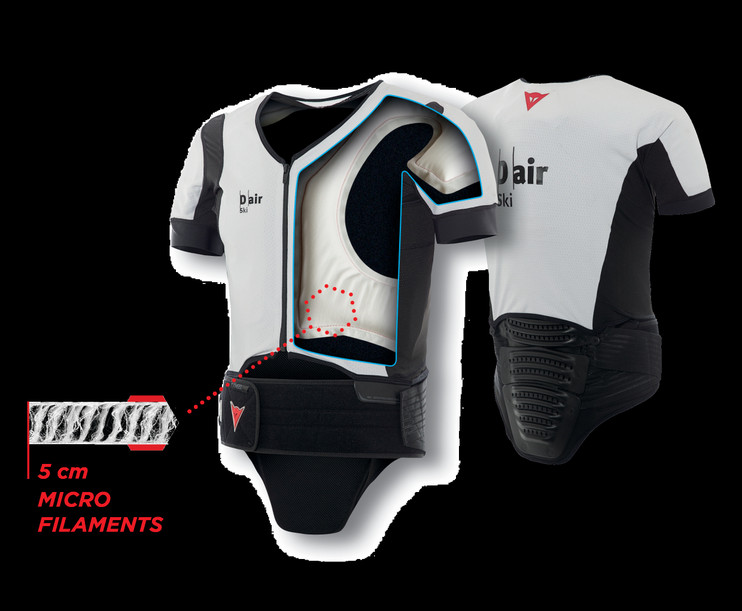We’ve teamed up with Dainese to shine a spotlight on luminaries from across the world of action sports and adventure – from big name athletes to epic innovations that showcase ambition and achievement that goes above and beyond the norm. Here, we speak to Dainese Racing Director Marco Pastore about the D-air Ski System – a game changing invention in skiing safety worn by the best in the world at the Olympic Games.
When US skier Lindsey Vonn won the downhill world cup sprint in Garmisch in Germany on 3 February 2018, she did so by two hundredths of a second from Italian Sofia Goggia. When Vonn won the second downhill race on the Kandahar mountain the following day, it was by just 0.11 seconds from the future Olympic gold-medallist Goggia, who was again her closest rival.
Every millisecond counts in alpine ski racing, and when you’re flying down a mountain at speeds of over 80mph, that can be a dangerous thing.
Not all Americans were as lucky as Lindsey Vonn in Garmisch. Jacqueline Wiles crashed hard, fractured her fibula and tibia and was ruled out of the Winter Olympics later that month. The next day veteran speed skiing star Stacey Cook took a horrible tumble at over 100km/h, though after staggering back to her feet, she appeared to be okay.
“It’s a safety revolution for the athletes. It can give them more confidence to reach their limits and go 100 percent”
Later Stacey took to Facebook to post: “There’s a weird kind of confidence you can take from doing an 80mph+ body slam into a wall followed by a face-bashing into the ice. It’s knowing that I can take a hit and carry on.
“I’m on my way to Korea with a sweet black eye and some sore lower legs but am confident in my therapy to get me [back] on snow soon. I am oh so thankful for my protective gear that I believe allowed me to defy what seems possible and walk away from this.”
Then Stacey Cook signed off with two hashtags. One being the comical ‘#blackandblueisthenewpretty’, and the other simply stating: ‘#airbagsrock’.

Airbags are a relatively new addition to the protective wardrobe of professional alpine skiers, but with everyday that passes the momentum behind them grows stronger.
The innovation was dreamt up by Italian firm Dainese over a decade ago, though it was originally implemented in motorcycle racing.
“We started developing it for the motorbike in the 2000s,” says Marco Pastore, racing director at Dainese. “Now with skiing we’ve been equipping the pros with the airbag system for four or five years.






